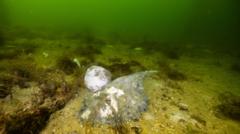A toxic algal bloom, which has turned the usually clear waters of South Australia into a menacing green landscape, has been declared a "natural disaster" by the state premier, Peter Malinauskas. The ongoing phenomenon has seen a rapid multiplication of algae since March, expanding into an area now twice the size of Australia’s capital territory. Although the federal government has announced a financial aid package of A$14 million ($9 million), there is hesitation to classify the event as a natural disaster, a designation that usually pertains to cyclones and extreme weather.
Malinauskas emphasized the urgent need to recognize this event properly, arguing that failure to do so may mislead the public about its severity. "This is a natural disaster and should be acknowledged as such," he stated during a recent interview. The government plans to match the federal funding, aiming to address the ecological breakdown through research initiatives and supporting affected local industries.
More than 400 marine species have reportedly perished as a result of this bloom, and local fisheries are feeling the strain. Stakeholders from the fishing industry express dismay, with some fishers reportedly without income for months. Ian Mitchell, an industry intermediary, lamented on the emotional toll this crisis is taking on individual fishermen.
Criticism regarding the federal response is mounting, with Greens Senator Sarah Hanson-Young suggesting that had the blooms affected more affluent areas, a more aggressive federal response would have been guaranteed. Federal Environment Minister Murray Watt acknowledged the disturbing impacts but maintained that the event does not fulfill the legal criteria for a natural disaster.
The algal bloom's expansion, from Coorong to the Yorke Peninsula, is attributed to climate change factors, such as ocean warming and nutrient pollution, highlighting the intricate links between environmental changes and ecological catastrophes. As the coastline becomes lined with dead sea life, the urgency for a collective and recognized response grows amidst this critical juncture for Australia's marine ecosystems and local communities.

















